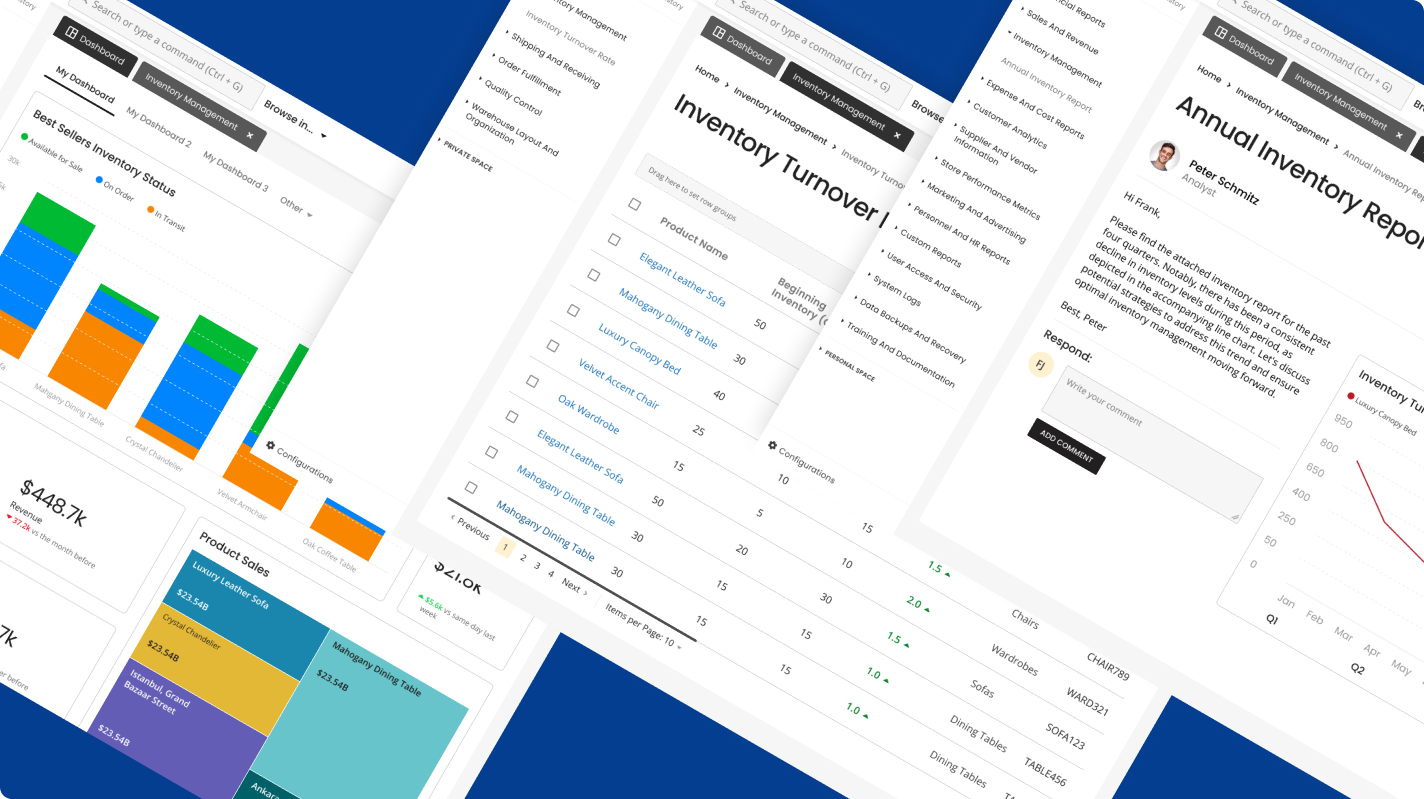Our solution balanced a variety of complex tasks with an easy-to-use, yet flexible design.
Our focus was on creating different paths for users with different jobs, like Finance, CRM, and warehouse management. This way, everyone can use the system easily, no matter their role.











